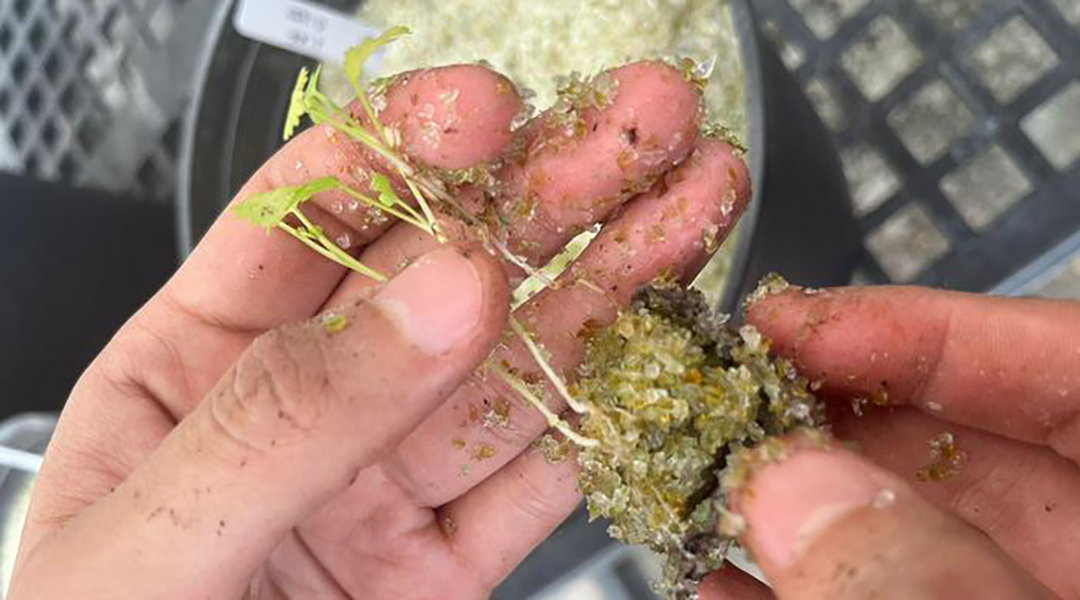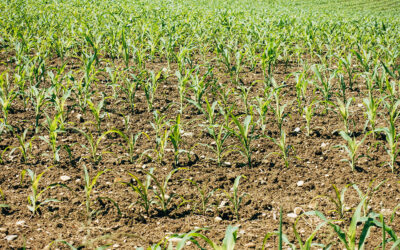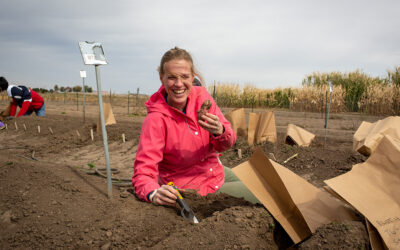“We’re trying to reduce landfill waste at the same time as growing edible vegetables.” This, says Andrea Quezada, a chemistry graduate student in Julie Vanegas’ team at The University of Texas Rio Grande Valley, is a way of tackling two sides of the environmental crisis at once.
In the USA, just 30% of glass is recycled, with some 7.5 million tons ending up in landfill each year. At the same time, intensive agriculture is causing soil degradation and biodiversity loss while demanding a constant supply of natural materials and chemical additives.
That’s why Quezada is experimenting with using crushed glass as a soil additive or replacement to grow crops. Early results suggest it can not only support thriving plant growth, but also ward off fungal infection, meaning our fragile ecosystems may find strength in tiny shards of glass.
Break glass in emergency
The urgent issues of climate change, biodiversity loss, habitat destruction, and food security require immediate attention, and this isn’t the first attempt to redirect waste glass to the cause.
Vanegas previously worked with the ReCoast team at Tulane University, characterizing the shape and chemical composition of glass sand for use in bolstering coastlines in Louisiana under threat from rising sea levels and rapid erosion. The glass sand supported native reed growth to secure the soil structure, and was less susceptible to erosion than naturally occurring silt.
In Grenada, a hotbed of recycled glass innovation, initial experiments with foamed glass have helped to create drought-resistant soil better able to retain moisture, while crushed glass has been shown to be more efficient in wastewater treatment plants than sand.
Back in Texas, Vanegas wanted to test the potential for recycled glass in growing food, and needed a fast-growing set of plants that could be cultivated on a small scale and spark interest in the local community.
They decided on the ingredients for pico de gallo salsa, investigating first the physical and chemical properties of the glass soil, and then its effects during growing. “If this is viable, then we might be able to introduce glass-based soils into agricultural practices for people here in the Rio Grande Valley and across the country,” said Quezada.
Sanding down glass
The recycled glass is crushed and then tumbled to round off the edges, producing particles smooth enough for people to handle without risking cuts, and for roots to grow through without being harmed. “This process helps make the grains more rounded, which allows them to fit together more effectively, creating spaces for air and water,” explained Vanegas.
These smooth particles can come in different sizes. The team assessed the soil-like qualities, such as compaction and water retention, of three different sized glass fragments. They found that a size similar to coarse sand grains had characteristics, such as allowing oxygen to reach the roots and maintaining sufficient moisture levels, that could be ideal for plant cultivation. Finer grades of sand might prevent obstruct water reaching the roots.
Glass soil may also have unique chemical properties that provide extra assistance to plants. “For instance,” said Vanegas, “cobalt blue glass contains cobalt oxide, while green glass may have copper or iron oxides. These elements can influence the color and the overall chemical composition. It has also been observed that glass sand often contains high amounts of sodium. This can affect the soil’s chemical properties and potentially enhance plant nutrient availability.”
The next step is to test the impact on plant growth, through greenhouse experiments with variable ratios of commercial potting soil to glass. Although harvest time has not yet come, early results suggest the plants grown in recycled glass have faster growth rates and retain more water compared to those grown in 100% traditional soil.
“A weight ratio of more than 50% of glass particles to soil appears best for plant growth compared to the other mixtures we tested,” said Vanegas, whose hopes have been boosted by seeing how well willow species are growing 8 months into the Louisiana coastal restoration project using glass sand.
An unexpected benefit appears to be in pest and disease control: pots with any amount of recycled glass didn’t have any fungal growth, while those in pure commercial soil developed a fungus that stunted root growth.
The team are collecting data to determine why this might be, and are conscious that careful research is needed to understand any impacts the glass soil may have on natural soil ecosystems. The promise of reducing the use of fertilizers, pesticides, and fungicides is particular inspiring to Quezada, whose family work and live in farming communities.
“I think it’s really important to try to minimize the usage of any chemicals that can negatively affect our health,” she said. “If we are able to reduce them, and help the community by collecting recyclables, then we can give people a better quality of life.”
A future for sustainable agriculture
If this work can help fortify soils for agriculture, replace sand — the most exploited natural resource after water — in at-risk areas, and reduce material being sent to landfill, it will achieve those goals. “Addressing local issues with global significance is a core value in our institution,” said Vanegas.
But even if the crop in the greenhouses in Texas thrives, there are barriers to overcome before this has large-scale impact.
First, building glass recycling centers and crushing glass has a very high set-up cost. “However, thanks to ongoing collaborations, we are working to extend this project throughout Texas,” said Vanegas, “aiming to overcome these challenges and make glass-based soils a viable and [sustainable agriculture] solution on a larger scale.”
Beyond these practicalities, there are social challenges to face as well. Farmers and the local community need to be assured of both the safety and efficacy; a robust supply chain and infrastructure for sourcing, processing, and distributing recycled glass is needed; and recycling levels of consumers must rise, helped by policy and educational work.
“Overcoming these challenges will require coordinated efforts from researchers, policymakers and the farming community,” said Vanegas. “Additional research studies on food properties, edible properties, and other traits such as color, are still ongoing. After gathering results other scales of work can be achieved.”
But the team are hopeful that working together with other organizations across industry, policy, and academia to develop solutions for everyone’s benefit could have real impact.
“Our hopes for the future include making glass-based soils a mainstream, sustainable option in agriculture, reducing environmental impact, and promoting a circular economy,” said Vanegas, whose glass is certainly half full.
Reference: Evaluating recyclable glass material as a substitute for soil in vegetable cultivation: An innovative approach to sustainable agriculture, Reports and Proceedings, American Chemical Society (2024).
Feature image: Cilantro, bell pepper and jalapeño plants can grow faster when some of the potting soil is replaced with glass particles. Shown here are cilantro seedlings grown in 100% recycled glass material. Credit: Andrea Quezada

















